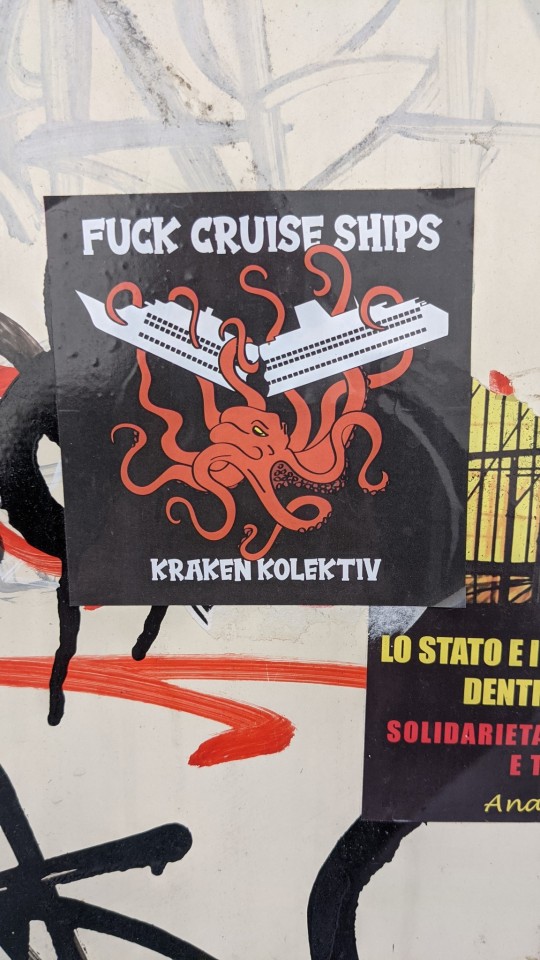#overtourism
Note
Cosa pensi del fatto che i turisti ora debbano prenotare e pagare un biglietto di 5 euro per entrare a Venezia?
Penso che se fosse così facile risolvere un problema mondiale come quello del turismo di massa, sarebbe già bell'e finito.
Non conosco nel dettaglio tutti i punti ma da quel che ho letto:
1. Non pagano i residenti in Veneto
Durante il weekend mezzo Veneto va a fare la "passeggiata" a Venezia perché tanto tutte le altre province sono vicine, massimo 1 oretta di macchina e ti fai un giro coi controcoglioni in una bella città. Ergo, tra Sabato e Domenica tra Piazza San Marco e Riva degli Schiavoni c'è così tanta gente che se non stai attento ti schianti con qualcuno.
2. Non paga chi pernotta nel centro storico di Venezia
Venezia è già un albergo di per sé (famoso il conteggio degli alloggi che ha superato quello dei residenti nella libreria Marco Polo), questa soluzione non aiuta per niente chi a Venezia ci abita e ci vive.
3. Per i turisti internazionali e nazionali che vengono da lontano, 5€ sono una nullità che vale la pena spendere per una città come Venezia.
In definitiva, cosa ha risolto Brugnaro? Si è messo qualche altro milione nella sacca da spendere per cretinaggini con la scusa di fare bene alla città. Easy peasy.
#cretinaggini come il progetto a cui ho partecipato io durante il tirocinio#Venezia#turismo#turismo di massa#overtourism#ask#anon
25 notes
·
View notes
Text
SEEN WEDNESDAY ON FREE HAWAI`I TV

This Is How Tourists Are Destroying Coral reefs In Hawai`i
ABC News - January 9, 2023
The millions of tourists who flock to the shores of Hawaii every year are wreaking havoc on its natural environment -- especially the coral reefs, which are at risk all over the world, a new study said.
The most popular coral reefs on the Hawaiian islands are likely being degraded by the very visitors they attract, according to a study published Monday in Nature Sustainability.
Researchers from Princeton University combed through more than 250,000 geotagged Instagram posts from 2018 to 2021 by tourists visiting Hawaiian reefs and compared them with flyover maps of live coral cover. They then used artificial intelligence to analyze reef map images at about a 2-meter resolution, or about 6.5 feet, and 16-meter, or 52.5-feet, depth, according to the study.
Bing Lin, a PhD candidate in science, technology and environmental policy at Princeton University's School of Public and International Affairs and the lead author of the study, got the idea to use social media for the research after doing fieldwork in Hawaii in 2021 and realizing that one of the first things people do when they visit a site is to take a photo and post it to Instagram, he told ABC News.
"They take pictures of the beaches, and they post on social media," he said. "Instagram is by far the main platform through which social media presence is documented, and so I came up with the idea of using Instagram to get a sense of a large-scale representation of where people are distributed in Hawaii."
The scientists found that the accessible sites with more live coral cover were visited more often, but that at the popular sites, coral covers were more degraded compared to those at less popular sites, the paper states.
"We were able to find that coral reefs not only played a really significant role in attracting tourism, but also that the tourism subsequently seemed to suppress live coral coverage at the sites in which tourism was most concentrated," Lin said.
While tourism is mostly concentrated on the shoreline, with lots of activity on the beach, many tourists end up on excursions in which they venture further into the ocean for snorkeling or scuba diving, Lin said.
Using keywords included in captions and hashtags, such as "#scubadiving," Lin was also able to determine a certain degree of interaction with the reefs. Corals tended to thrive farther out into the water, where there are less people, Lin said.
The degradation can happen in the form of diver contact, when divers intentionally or accidentally come in contact with the reefs, as well as elevated pollution in areas that tourists frequent, Lin said.
Places in Oahu in Honolulu County, such as Waikiki Beach, Waimea Bay, Lanikai Beach and Shark's Cove, were among the biggest spots for degraded reefs, Lin said.
Areas on the Big Island were also among the sites with the most degraded coral, he added.
Coral reefs are vulnerable all over the world due to ocean water warming and pollution.
A study published in the Proceedings of the National Academy of Sciences in 2021 found that coral reefs could stop growing in 10 years unless greenhouse gases are significantly reduced.
Coral bleaching, a process that occurs when water is too warm and the algae the corals expel from their tissues cause them to turn completely white, is inundating reefs all over the world, including the Great Barrier Reef in Australia.
In addition to their biodiversity and beauty, coral reefs serve as vital ecosystems, nurture fisheries and protect coasts....
"...The impacts of tourism is detectable across hundreds of sites," Lin said.
89 notes
·
View notes
Text
Shoot And Leave
In the rush to return to some semblance of normalcy in the post-COVID era, we have resumed traveling. And I mean traveling with reckless abandon. Forget about high gas prices and air fares, we’re just doing it anyway.
The big trend this summer was a European vacation—not the movie, but your own vacation. Personally, I drove 14,000 miles on three long trips, and went to Costa Rica. Pent-up demand was certainly driving all of us.
But a new problem has emerged in this digital era: overtourism. Essentially, the problem is this: People are flocking to tourist hotspots, taking and posting selfies, leaving without spending any money (or very little), and then, thanks to social media, inspiring others to visit also. It’s a cycle that some cities are now trying to combat by imposing tourism taxes.
And it is not much unlike the congestion tax we see in places like London, whereby drivers pay £15 per day to drive into the congestion zone. Some cities are charging $5-$10 per day for the privilege of day tripping. I doubt they will deter people though, especially once you factor in the cost of getting there in the first place. What’s another $10?

Overtourism is also happening locally. The Cadillac Ranch opened in 1974 as an art installation that the Ant Farm creative team developed and then sold in concept to Stanley Marsh 3. A few years ago, I interviewed the two surviving members for a feature that appeared in ROUTE Magazine. They never intended for the cars to be spray painted; that just happened organically. Located along I-40 a couple of miles west of Amarillo, it is reported to have more than two million visitors each year. It was even moved in 1997 from its original location a few feet west of the new Sam’s Club, to allow room for the city to grow.
So popular is the place that TxDOT had to install concrete jersey barriers to separate the Frontage Road from the freeway (to keep people from just driving through the grassy median to get there). I always scratched my head over why Marsh (who died in 2014) never monetized the place. That all changed two years ago when his family trust (to whom he had bequeathed the ranch in 2013) put a merch trailer onsite. The trailer sells t-shirts, caps, and the usual trinkets, as well as spray paint.
Duh. That was an easy one, because, as rumor has it, until then, the Home Depot at Soncy and I-40 was reputed to have the highest spray paint sales of any store in the chain.
Alas, people have taken to painting anything and everything, including the dirt, the road, the fence, and even the jersey barriers. On weekends, there is a traffic snarl along that stretch, with dozens and dozens of cars parked helter skelter. Tourists do their thing, take selfies, and post them.Then the cycle continues.
Good on the Marsh family trust to finally figure out how to separate people from a little bit of their money, but not all places are as lucky. When selfies in unique places become a prize unto themselves, a trophy for having been so cool as to seek out those places, there is always the risk that visitors will shoot and leave.
Wouldn’t it be nice if even just 10% of those Cadillac Ranch visitors stopped long enough for fuel or a meal? Better yet, how about lodging? I bet most people just keep going, though.
I am particularly guilty of this. Heck, my Facebook profile pic is of me standing by—wait for it—that familiar row of painted Cadillacs. And I have done this in many other places. It was no different from when we went to Carhenge in western Nebraska a few years ago. Snap snap snap…and off we went.
My passion is photographing roadside America, specializing in vintage neon signage, but also including the 1960s-era fiberglass Muffler Men and other oddities. Often I will shoot a selfie after I have finished doing my usual photo documentation. I seldom stay long enough anywhere to spend money, though. Some of the most common questions I am asked are “Did you eat there?” and “Did you spend the night there?”
If I did that, I would never be able to photograph as many things as I do.
As for cities and states that are tourism magnets, it is often a love-hate relationship. You hope people linger long enough to spend lots of money, but at the same time, you begin to loathe the traffic problems tourism can create. Just try to drive through Orlando Florida any time of the year. Or, to pick on a city closer to home, Albuquerque during Balloon Fiesta.
Then there is the case of China, the second biggest economy in the world. When I took my Chinese-born daughters there in 2019, we shot and posted tons of photos. While the notorious “Chinese Firewall” keeps residents from accessing western media, all it took was a VPN pointed at Hong Kong for us to dodge that bullet. And I suspect that the Chinese are good with this, because we basically became their pro bono advertising agency.
Ah, but China just lives with congestion. Bring it, baby, and bring lots of US dollars.
If anything, we can thank smartphones, social media, and always-on internet for putting a lot of this into hyper-drive. I don’t see things getting any better, short of another pandemic (please, no). Just don’t hog the space. Take your selfie and get out of the way. We’ve all got influencing to do.
Dr “Among The Worst Offenders” Gerlich
Audio Blog
2 notes
·
View notes
Photo






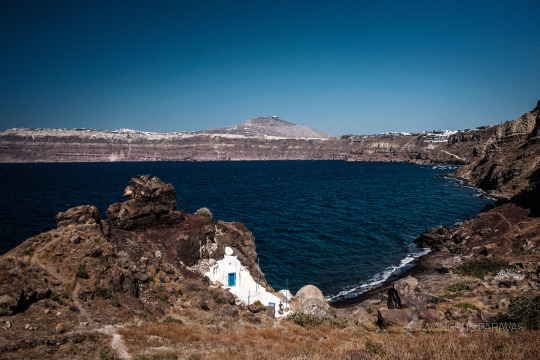

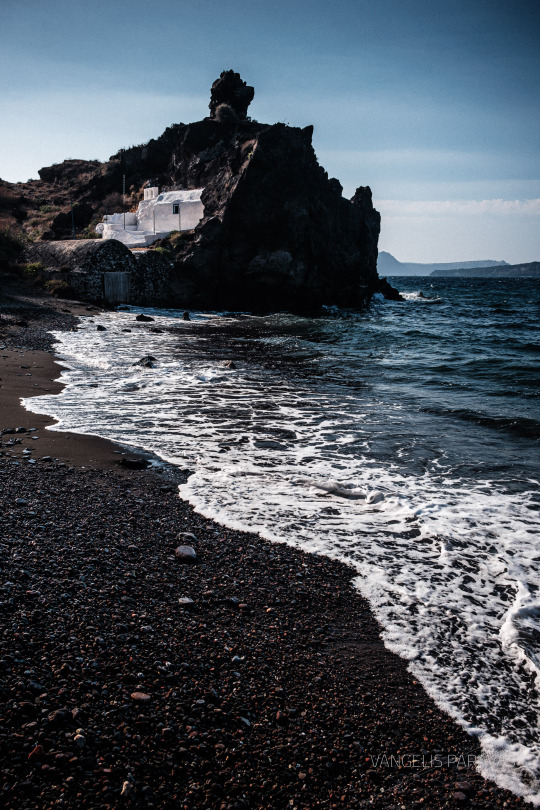

Hidden Gems or devoured landscapes?
It seems that the we are currently living amidst the first post-pandemic (NOT) summer of the northern hemisphere, howbeit already overflowed with natural catastrophes, extreme weather events and climatic emergencies. Despite the superficial aestival slump, my everyday newsfeed is full of calamities, disasters, and the overhanging (or better already present at least in Greece) financial collapse of the coming winter.
At the same time the famous islands and coasts of Greece are overwhelmed, actually swarmed by tourists, implying that 2022 will be the next record year in arrivals, after the phenomenal 2019. This precipitates the mainstream, but fully distorted common perception that tourism constitutes Greece's heavy industry.
Alas we have reached the point of no return and apart from our cities, villages, and the iconic ancient antiquities, virtually all landscapes, seascapes and marine areas, whole islands, along with their natural ecosystems and their entire local culture have been transformed into a commercial product, advertised, sold and consumed irresponsibly and utterly unsustainably. This all-inclusive perspective has steered a substantial part of the whole Greek economy towards the services sector, thus fully abandoning other key primary productive activities, such as agriculture, particularly in areas and sites in which they traditionally had a huge financial but also social importance. The repercussions of this ill thought advance are more than obvious in small, isolated insular and mountainous communities, where traditional and other primary productive activities have ceased to exist, bringing about heavy dependence from the mainland for basic products and goods.
Closely observing the above rationale, investors acquire considerable areas of whole Islands solely to satisfy commercial interests, and proceed to the construction of pharaonic resorts that devour unique, vulnerable and threatened landscapes. Tourism and its consecutive massive -in most cases- reverberations that are necessary for accommodating the out of scale numbers of targeted visitors, have drastically altered the appearance and essence of cities, towns and villages, while the devastation of this hasty and improvised transformation has left incurable scars on the natural landscapes and seascapes. This unprecedented flow of travellers and of course income, has veiled the urgent need to take precautions, formulate regulations and organise the whole society for what now we name "Overtourism".
Even so, the traditional livelihoods and the unbroken for millennia way of life in the Aegean and Ionian insular communities, as well as in the secluded mountainous villages have radically changed. Entire local and mostly isolated communities, along with their sustainable and self-sufficient economies that have been surviving and evolving for thousands of years have become in a matter of decades dependant to a sole and absolute activity: provision of touristic services. The exclusive character and idiosyncrasy of each community, island and village has been lost, and exchanged to a uniform appealing touristic product to be marketed and bought. The prudent passenger will easily suspect that the cosmopolitan and hospitable impression and façade of Santorini and Mykonos are only superficial. Just beneath this thin, papery surface one can only find an unvarying Disney land, a carefully prepared and set up theatrical scenery completely detached from its surrounding societal, local and natural environment.
The photography for this post was taken during the revisit of several walking paths hiked some years ago, which produced numerous of my blog posts for landscapes and places, still undiscovered on the island of the famous and over-visited Santorini. Unfortunately, it seems to me that this impression will not stand for long. I am content that a hidden paradise is even now secluded from the eyes of many, but until when...
#Santorini#Summer#tourism#overtourism#photography#landscapes#seascapes#sea#sun#colour#greece#Insular#cyclades#sustainability#Environment#destination#aegean
2 notes
·
View notes
Text
Locals’ Backlash: Málaga’s Rising Frustration with Overtourism

During past couple of years, Málaga, located on the coast of Spain at Costa del Sol, has had a significant increase in the number of tourists, making it a sought after destination by travelers around the world. However, the sun-splashed atmosphere of the city is just a cover-up of a simmering unrest among its locals.
Rising Frustration Among Locals
The Malaga walls feature vivid stickers that represent, at the end of the day, the discontent of the locals with the increasing number of tourists. The feelings range from a sentimental reminiscence of a faraway home to full hatred, revealing the extent of rejection. The downtown core that used to be so attractive is now drowning, residents being dispossessed and thus marginalized.
Read More:(https://theleadersglobe.com/life-interest/travel/locals-backlash-malagas-rising-frustration-with-overtourism/)
#Málagalocals#overtourism#Rising#global leader magazine#the leaders globe magazine#leadership magazine#world's leader magazine#best publication in the world#article#news#magazine#business
0 notes
Text
“Japan has become a bucket-list destination,” said Karlÿn de Bruin, who was visiting Tokyo from the Netherlands with her father and brother. “I can imagine that local people get fed up, so we try to mind our own business. But you can feel the social media vibe … people dressing up and taking photos in certain ways because it makes good content."
Some of the stories you hear about western IRL streamers in Tokyo, are so disheartening. Treating it entirely like their personal playground and ignoring all local customs and rules. I mean, some have been outright banned from the country, but still, it's pretty depressing to read about.
0 notes
Video
youtube
How Over Tourism Is Destroying Cities
0 notes
Text
Venice Rolls Out Day-Tripper Fee Amid Overtourism Fears Trendynewsbro
ROME (AP) — Venice authorities on Thursday unveiled a pilot program to charge day-trippers 5 euros ($5.45) apiece to enter the fragile lagoon city on peak weekends next year in an effort to reduce crowds, encourage longer visits and improve the quality of life for residents.
The rollout of the tourist “contribution” program came after Venice, a UNESCO World Heritage site, narrowly escaped being…

View On WordPress
0 notes
Text
In Italia turismo da miliardi di euro in evasione fiscale

I sette peccati capitali del turismo: vale 100 miliardi ma spazza via tutte le regole. Dopo il Covid l’Italia è di nuovo invasa dai visitatori, con meno italiani e più stranieri. Ma le città d’arte soffocano, le norme sono inapplicabili e le restrizioni agli affitti brevi non arrivano. Tra inquinamento, evasione e lavoro nero il viaggio è da incubo.
Inquina. È in prima linea nell’evasione fiscale. Applica condizioni di lavoro da settore tessile nell’Inghilterra di fine Settecento. Ha regole a iosa ma i controlli sono quasi impossibili. Chiede sussidi e occupa sempre più gli spazi pubblici. Vive di concessioni, come quelle dei lidi o dei taxi, che si tramandano per ius sanguinis. Sta snaturando le città d’arte con il fenomeno degli affitti brevi e con una pressione di visitatori insostenibile.
I sette peccati capitali del turismo sono uguali nel mondo. In Italia, sono un po’ più gravi perché bisogna aggiungere la fragilità del sistema trasporti-infrastrutture, le condizioni climatiche e persino il dissesto idrogeologico. Sotto questo titolo possono rientrare l’alluvione in Emilia-Romagna di questa primavera, a ridosso dell’apertura delle spiagge in riviera, l’incendio di un condizionatore o di una fotocopiatrice che ha bloccato l’aeroporto di Catania e l’ondata di calore sahariana.
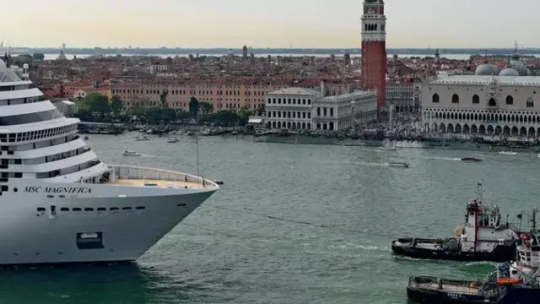
Eppure, dopo gli anni orribili della pandemia che hanno fatto saltare tutti i parametri di settore, il turismo ha mostrato la sua capacità di ripresa e resilienza. E se il cliente o il residente non sono sempre soddisfatti, affari loro. I serbatoi delle Americhe, dell’India e della Cina sono ben lontani dall’essere sfruttati secondo le potenzialità.
In un’Italia che perde peso nell’industria e dell’innovazione tecnologica da ben prima del Covid-19, il turismo si conferma un pilastro del prodotto interno lordo con 100 miliardi di euro circa nel 2022 pari a poco più del 5 per cento rispetto ai 1.909 miliardi del pil totale 2022. Per dare un’idea, è lo stesso peso del comparto costruzioni ed è un quarto dei 400 miliardi che porta a casa l’intero settore industriale.
Il rilancio dopo le chiusure del 2020 è stato disordinato, da corsa all’oro della California, e la stagione estiva si sta chiudendo con un bilancio altalenante. In sintesi, i visitatori stranieri hanno compensato il disamoramento degli italiani costretti sulla difensiva dalla crisi e dai prezzi impazziti. Ma già parlare di stagione è anacronistico. Il nuovo mantra è appunto la destagionalizzazione con le giunte comunali e regionali che sempre più si orientano verso i grandi eventi per dodici mesi all’anno.
Il nuovo tsunami ha creato, soprattutto ai sindaci, un caso clamoroso di falsa coscienza. Da un lato, benedette siano le orde che puntellano l’economia cittadina pagando la divisione in due dei toast sul lago di Como, il servizio torta a Palermo e tre pizze a 63 euro a Genova. Dall’altro, ci sono i datori di lavoro dei sindaci ossia gli elettori, sempre più imbestialiti da mangifici e movide.
Fermare il maremoto che stravolge i centri urbani sembra impossibile. Un esempio è Milano che solo vent’anni fa nessuno avrebbe mai definito una città turistica e che nel 2022 ha totalizzato 6,7 milioni di presenze con un +33 per cento (871 mila unità) nel luglio 2023 rispetto allo stesso mese dell’anno precedente. Fra settimane della moda, del design, del beauty, del wine, si dovesse mai usare l’italiano, il capoluogo lombardo è diventato un riferimento persino per la capitale che ha 911 siti culturali contro i 524 della città governata da Beppe Sala.
Roma oggi ha un assessorato ai grandi eventi, sport e turismo guidato da Alessandro Onorato, 41 anni, imprenditore della ristorazione che nei mesi scorsi si è detto prudente sul giro di vite alle licenze varato dal primo cittadino di Firenze Dario Nardella.
Per la capitale ancora in caccia dell’Expo 2030, quindici anni dopo l’esposizione milanese, è stato un anno ottimo. Il record del 2019 è stato superato con +14,3 per cento di arrivi e + 9 per cento di presenze, secondo l’ente del turismo regionale (Ebtl). Il valore aggiunto punta a quota 10 miliardi di euro, quasi un decimo del pil turistico nazionale.
Ad agosto l’aeroporto di Fiumicino ha mosso 4,2 milioni di passeggeri (+30 per cento sul 2022). L’esordio del Pantheon a pagamento ha fruttato 280 mila visitatori mentre la Ryder cup di golf da poco conclusa ha portato prenotazioni per 70 mila stanze.
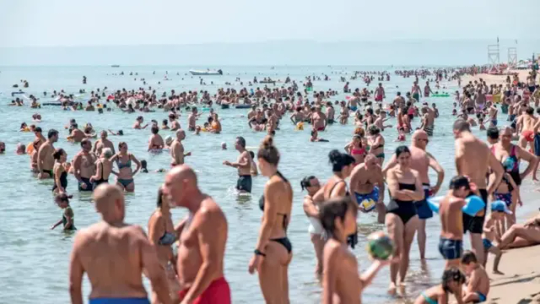
Ma il saldo è in chiaroscuro. Sul fronte del passivo ci sono i deficienti che imitano Anita Ekberg e il suo bagno dentro la fontana di Trevi. C’è l’accaparramento dei biglietti del Colosseo attraverso i bot che imitano gli acquirenti reali per consentire a chi li manovra di rivendere gli 11 mila biglietti quotidiani sul mercato del second ticketing a prezzi maggiorati.
Ci sono le file di due ore ai taxi della stazione Termini denunciate dal presidente di Federalberghi Bernabò Bocca e le risse con gli Ncc a Fiumicino. Ci sono le metropolitane a singhiozzo, l’Atac e l’Ama in crisi, il traffico impazzito. Soprattutto sono stati censiti 12 mila b&b abusivi oltre alle 35 mila strutture dedicate agli affitti brevi. L’evasione della tassa di soggiorno è stimata fra i 20 e i 40 milioni di euro.
Dal grande al piccolo Venezia, che ha una concentrazione di siti superiore a Roma (258) considerando l’estensione, per la prima volta ha offerto più posti letto ai visitatori che ai residenti: 49700 contro 49300. La città lagunare sarà la prima a pagamento del mondo.
A metà settembre la giunta del sindaco Luigi Brugnaro ha approvato in via sperimentale la tassa d’ingresso a partire dalla prossima primavera. Anche grazie a questo provvedimento, due giorni dopo l’Unesco ha votato contro l’inserimento di Venezia nella lista nera dei siti patrimonio dell’umanità a rischio. Resta peraltro da vedere se la tassa inciderà sulla limitazione degli accessi o se sarà soltanto una fonte di reddito in più per Ca’ Farsetti.
Il boom più inatteso si è verificato a Napoli tanto che il giornale francese Le Monde, con romanticismo discutibile, ha rimpianto i bei giorni in cui i Quartieri spagnoli erano il regno di contrabbandieri e prostitute anziché dei pellegrini in visita a Largo Maradona bardati di maglia azzurra con scudetto tricolore.
«Napoli teme di diventare una seconda Barcellona», ha titolato il giornale francese citando il caso della capitale catalana che per prima in Europa ha affrontato il tema del contingentamento delle licenze per gli affitti brevi e per gli esercizi commerciali, otto anni fa con Ada Colau sindaca.
L’esempio della socialista spagnola è stato seguito dalla collega socialista parigina Anne Hidalgo che nel 2019 ha fatto causa ad Airbnb chiedendo 12 milioni di euro. En passant, è una cifra non proprio angosciante per il colosso fondato da Brian Chesky, Joe Gebbia e Nathan Blecharczyk. Airbnb ha chiuso il 2022 con 6,6 milioni di annunci attivi e utili netti a quota 1,9 miliardi di dollari.
Ma nemmeno a Chesky piace perdere quote di mercato perché, dopo Barcellona e Parigi, anche Amsterdam, Berlino e Londra hanno introdotto limitazioni al numero di notti l’anno per non essere considerati struttura alberghiera, con le tasse e i controlli che ciò comporta.
Ultima è arrivata New York, dove il 5 settembre è entrata in vigore la Local law 18 che stabilisce limitazioni severe sugli affitti brevi sia per le piattaforme sia nei confronti degli utilizzatori. Nell’intervallo tra la proposta di legge, annunciata a gennaio del 2022, e la sua applicazione venti mesi dopo la Grande Mela ha visto scendere i suoi annunci attivi a 7 mila, meno che a Napoli.
È difficile dire se l’opposizione dei sindaci, alla lunga, creerà un effetto diga. Ma una diga serve. Secondo il rapporto Ue “Consumo e ambiente”, il turismo è la quarta causa di produzione di Co2. Secondo il Wttc (World travel and tourism), un forum di imprenditori che coopera con i governi, il settore è responsabile di una quota fra l’8 e il 10 per cento della produzione globale di anidride carbonica. In Giappone hanno coniato il termine Kanko Kogai (inquinamento turistico). Nella lingua dei viaggiatori, è semplicemente Overtourism.
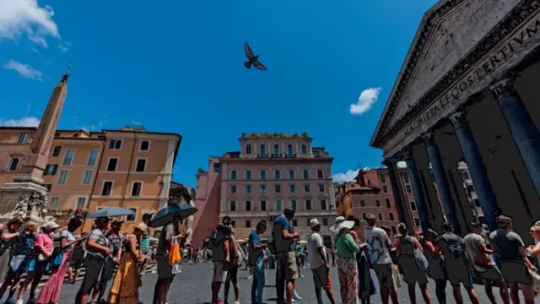
A livello di governo centrale italiano la riforma promessa non c’è ancora. A giugno una prima bozza di disegno di legge della ministra del Turismo Daniela Santanchè, impiombata dalle inchieste giudiziarie sulle sue società, è stata ritirata fra le critiche. La seconda bozza è stata proposta in senso più restrittivo verso gli affitti brevi e con il no alla cedolare secca del 21 per cento.
«Noi non siamo contro la proprietà privata ma prima c’era un far west che gli amministratori non hanno contrastato», ha replicato la ministra a Sala che l’accusava di non avere fatto nulla. Le critiche del sindaco, e di tanti altri politici locali schiacciati dalle invasioni barbariche, non sono rimaste isolate perché la regolamentazione del turismo è il modo ideale per farsi nemici, dovunque si mettano le mani.
Confedilizia, il sindacato dei padroni di casa, insieme ad altre dieci organizzazioni di categoria, ha accusato il ddl sul turismo di ledere in modo incostituzionale il diritto di proprietà e di «contrastare la locazione di abitazioni private attraverso l’introduzione di un numero ingiustificato di divieti, limitazioni, requisiti e obblighi, alcuni dei quali di impossibile applicazione».
Per motivi opposti il testo Santanchè è stato accolto con favore da parte di Federalberghi, che vede negli affitti brevi il nemico numero uno. Ma mentre gli squadroni di Airbnb, Booking, Expedia procedono compatti, in Italia si vive di spaccature corporative tra associazioni aderenti alla Confindustria (Federturismo), alla Confcommercio (Fipe) e decine di altre sigle indipendenti.
Fra gli strumenti disponibili a sostegno del settore ci sarebbe l’ente del turismo Enit, carrozzone per antonomasia che nel lontano 2014 Matteo Renzi aveva messo nella lista delle rottamazioni.
A novembre 2022 Santanchè ha affidato l’Enit all’amica Ivana Jelinic, ex numero uno di Fiavet, la federazione delle agenzie di viaggio messe in crisi dal fai da te online disponibile sulle piattaforme. Per adesso Enit si è sentita nominare per la campagna da 9 milioni di euro Open to Meraviglia, contestata urbi et orbi, e per l’accordo con WeChat, una sorta di WhatsApp cinese, finalizzato ad aumentare le presenze dalla Repubblica popolare, abitata da 1,4 miliardi di persone che solo in piccola parte hanno scoperto le gioie del turismo. Per gli operatori sarà una gioia accoglierle. Per tutti gli altri è l’incubo assoluto.
Read the full article
#b&babusivi#Colosseo#evasionefiscale#industria#innovazionetecnologica#OpentoMeraviglia#Overtourism#prezziimpazziti#Quartierispagnoli#settepeccaticapitali#turismoitalia
0 notes
Text
Iceland's New Tourist Tax: What You Need to Know
In its continuing efforts to sustain its pristine landscapes and unique heritage, Iceland has recently made the move to implement a tourist tax. This has come as a response to the increasing influx of visitors attempting to visit the country. The sheer number of visitors is putting pressure on the natural wonders, so the tax has been introduced so that the funds can be used to preserve them for…

View On WordPress
#Carbon Footprint#Conservation#Environment#Iceland#Nature#Net Zero#News#Overtourism#Preservation#Tourist#Tourist Tax#Travel news
0 notes
Text
Amsterdam: The European capital fighting bad tourists - BBC Travel
0 notes
Text
CAN YOU AFFORD IT?

13 notes
·
View notes
Video
youtube
Koh Lipe - Paradise or Overtourism? 🇹🇭
0 notes
Photo

These online searches will activate Amsterdam's "Stay Away" campaign
Amsterdam has begun spreading the message that rowdy tourists aren’t welcome in the Dutch city.Read more...
https://qz.com/amsterdam-stay-away-campaign-search-terms-1850277331
#amsterdam#stayaway#airbnb#marcolemmers#costabrava#overtourism#conscioushotels#citiesineurope#hospitality2crecreation#sofyanmbarki#geographyofthenetherlands#Ananya Bhattacharya#Quartz
0 notes
Text
Cannabis smoking banned to be on the streets of Amsterdam
Cannabis smoking banned in weed in the city of Amsterdam’s ghetto will before long be restricted, the city’s board has declared.
The objective has for some time been known for weed however neighborhood inhabitants have griped that over-tourism is making the focal point of the city unacceptable. In excess of 18 million explorers visited Amsterdam last year.
“Occupants of the old town experience…
View On WordPress
0 notes
